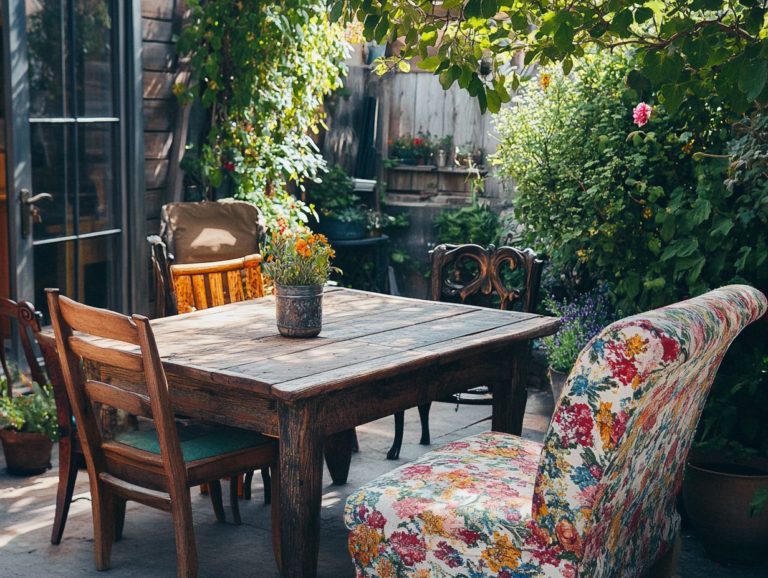Caring for Your Vintage Furniture: Tips and Tricks
Vintage furniture infuses charm and character into any space. It demands your careful attention to preserve its beauty and value.
This guide unravels the essentials of caring for your vintage pieces. You ll discover exciting tips to identify various types, understand materials and construction, and learn good cleaning methods.
You ll also find insights on how to effectively restore and repair your items. Whether you lean toward DIY methods or prefer enlisting professional expertise, act now to ensure your vintage treasures stay stunning for years!
Explore tips for long-term care and storage that will ensure your vintage furniture treasures continue to captivate for years to come, prioritizing proper furniture care and maintenance routines.
Contents
- Key Takeaways:
- Why Proper Care is Important
- Identifying Different Types of Vintage Furniture
- Cleaning and Maintaining Vintage Furniture
- Restoring and Repairing Vintage Furniture
- Preserving the Value of Vintage Furniture
- Frequently Asked Questions
- What is the best way to clean my vintage furniture?
- How often should I dust my vintage furniture?
- How can I protect my vintage furniture from sunlight?
- What should I do if my vintage furniture has a musty smell?
- How can I repair scratches or dents on my vintage furniture?
- What should I do if my vintage furniture has water damage?
Key Takeaways:
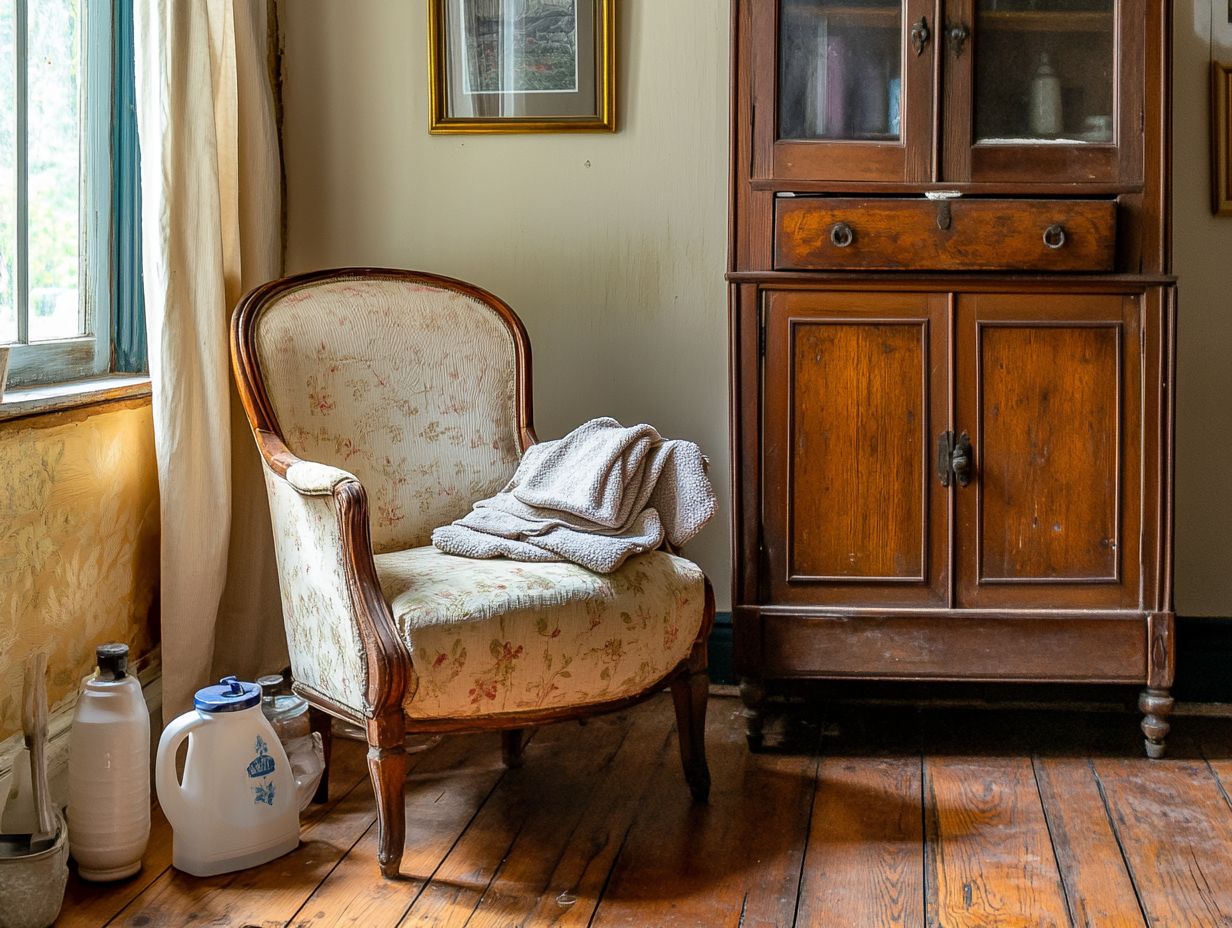
- Regular cleaning and maintenance are crucial for preserving the historical value and lifespan of your vintage furniture.
- Understanding the materials and construction of your vintage furniture can help determine the best cleaning and care techniques.
- For more extensive restoration and repair, it may be best to seek professional services. However, DIY techniques can also be effective for minor repairs.
Why Proper Care is Important
Caring for vintage furniture is essential for preserving its unique design and craftsmanship. This ensures its longevity while maintaining its historical value and cultural significance.
By learning good cleaning methods and the restoration process, you can protect your vintage treasures from deterioration. This safeguards both their structural integrity and your investment.
Use expert tips to keep the furniture in great condition. This allows you to appreciate its distinctive character through generations.
Identifying Different Types of Vintage Furniture
Identifying the various types of vintage furniture requires a keen understanding of distinct design movements and styles. This includes Art Deco, Scandinavian design, mid-century modern, and Victorian.
Each of these styles showcases unique craftsmanship and aesthetic qualities that reflect their historical context. As a collector or enthusiast, immersing yourself in these categories will deepen your appreciation for the intricacies and cultural significance of each piece.
This knowledge gives you the power to make informed decisions when acquiring or maintaining vintage items. It enhances your collection with pieces that truly resonate.
Understanding Materials and Construction
Understanding the materials and construction of vintage furniture is crucial for evaluating its craftsmanship. Each type of wood and joinery technique (the methods used to connect pieces of wood) plays a significant role in the piece s durability and aesthetic appeal.
By familiarizing yourself with these elements, you can confidently identify quality pieces and inform your restoration practices. This ultimately ensures the longevity and appreciation of those vintage treasures.
Different woods found in vintage furniture, like oak, mahogany, and walnut, not only provide distinctive visual characteristics but also influence the piece s overall strength and resilience.
Take mahogany, for instance; it s coveted for its rich, reddish-brown hue and impressive resistance to warping. This makes it a top choice for high-end furniture.
Techniques like dovetail or mortise-and-tenon joints are vital for structural stability. These joints support themselves without the need for metal fasteners.
Preservation efforts often prioritize these aspects. Utilizing the right cleaning agents and techniques can safeguard the wood’s finish while maintaining its integrity.
This attention to detail allows vintage enthusiasts like you to relish every nuance of your cherished finds.
Cleaning and Maintaining Vintage Furniture
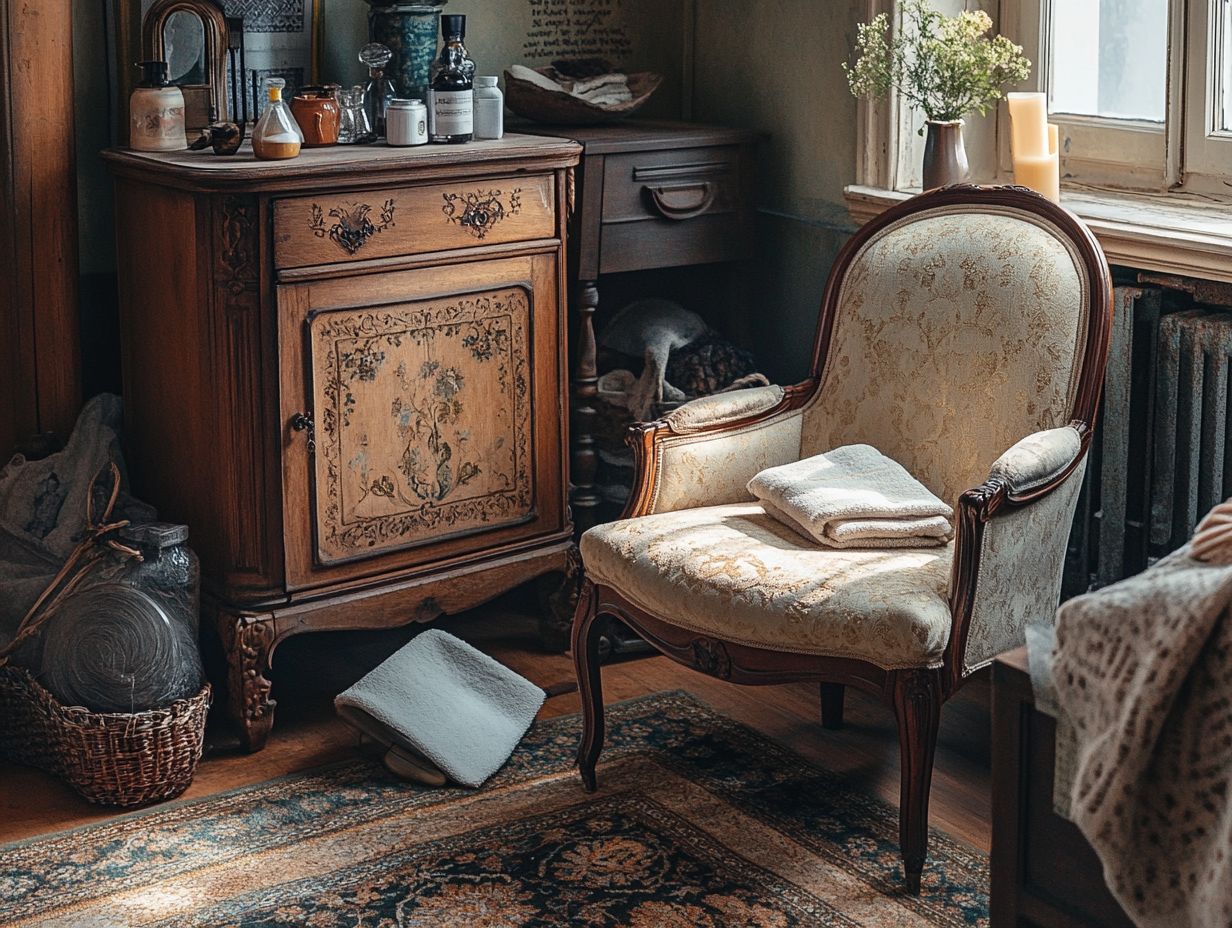
Cleaning and maintaining vintage furniture demands a thoughtful approach that protects its integrity while elevating its beauty.
You ll want to use gentle techniques, such as softly wiping with a cloth and mild soap, to avoid any damage. Regularly dusting and following a proper maintenance routine are essential for preserving these cherished pieces.
By doing so, you ensure they remain in excellent condition for future generations to admire and enjoy.
Best Practices for Cleaning and Dusting
Implementing best practices for cleaning and dusting vintage furniture means using the right techniques. A soft cloth and mild soap are your best friends here. They are gentle enough to protect those delicate surfaces while effectively whisking away dust and grime.
Don’t overlook the power of a microfiber cloth; it attracts dust like a magnet without scratching the finish. Start by gently dusting off any loose particles. This initial step is crucial before introducing any cleaning solution.
For pesky stains or built-up grime, mix a bit of gentle dish soap with lukewarm water. Apply it sparingly to a cloth. If you want to elevate the wood s natural luster, use a specialized furniture polish just ensure it s compatible with the specific finish of your vintage treasure.
Establish a regular cleaning routine to preserve the beauty of these cherished pieces and significantly extend their lifespan.
Treating and Preventing Damage
Treating and preventing damage to vintage furniture is essential for preserving its aesthetic appeal and value. Address common issues like water stains and surface imperfections promptly to avert further deterioration.
Apply furniture wax and a protective topcoat to shield these treasures from future damage. This ensures they maintain their charm and integrity for years to come.
Vintage pieces often face challenges such as scratches, fading from sunlight, and inevitable wear and tear from regular use. To tackle these issues effectively, establish a climate-controlled environment that minimizes extreme temperatures and humidity. For more detailed guidance, refer to our step-by-step guide on restoring vintage furniture. This helps to prevent warping wood and degrading fabric.
Regularly rotate decor and use coasters to reduce the chances of unsightly marks. For wooden items, opt for oil-based products to revive their original luster and create a barrier against moisture, extending their lifespan and preserving their unique characteristics.
Restoring and Repairing Vintage Furniture
Restoring vintage furniture is an exciting journey that brings your piece back to life while enhancing both its aesthetic appeal and functionality. Whether you dive into DIY techniques or enlist the help of professionals for more complex restorations, the journey is undeniably rewarding.
By understanding the restoration process, including the effective use of wood glue for structural repairs, you empower yourself to make informed decisions that honor the craftsmanship of each piece while ensuring its longevity and value.
DIY Techniques and Professional Services
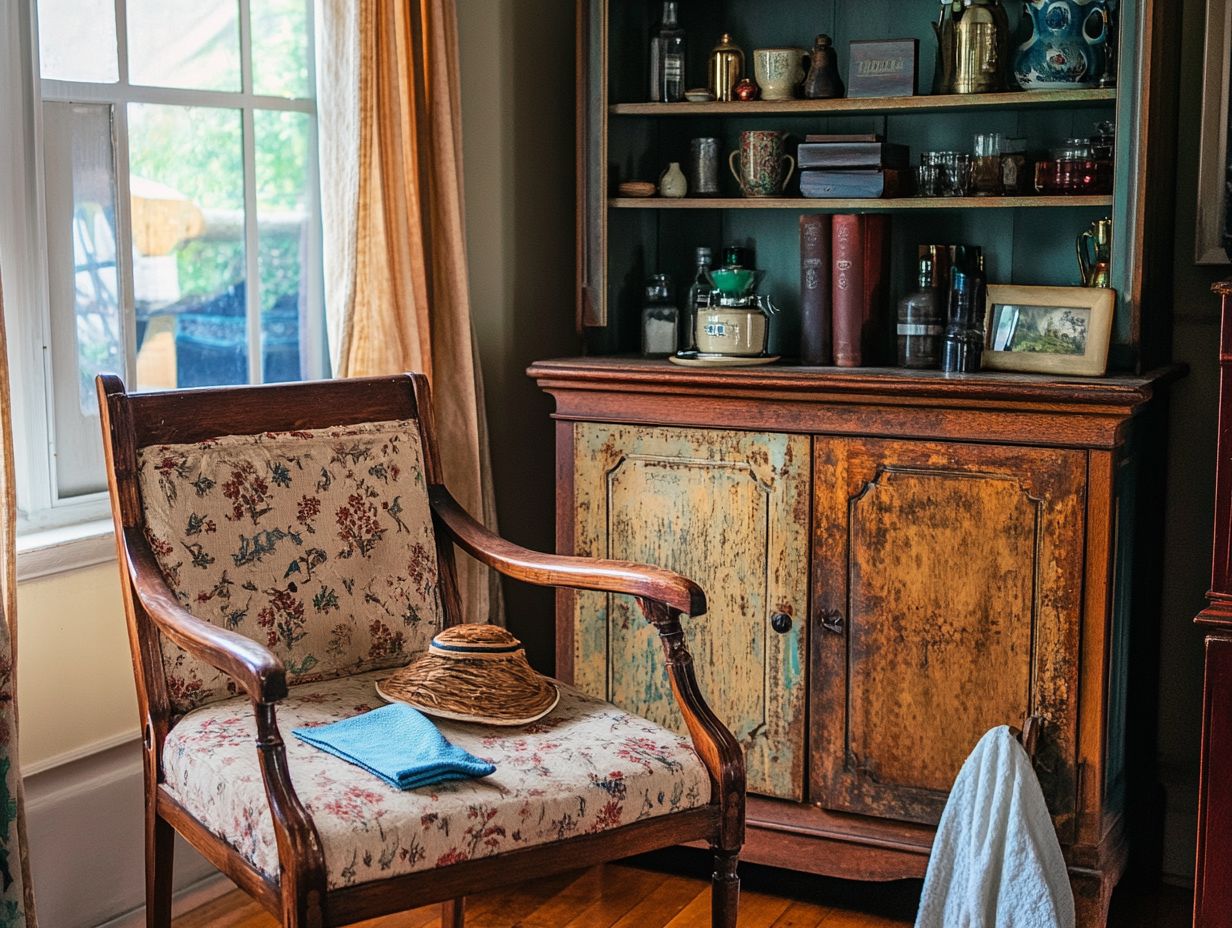
Choosing between DIY techniques and professional services for restoring vintage furniture depends on the piece’s condition and your skill level. Each option offers distinct advantages in the restoration process. If you’re a DIY enthusiast, you can tackle simple repairs and refinishing with relative ease.
For example, you can effectively address a minor scratch or faded varnish with basic tools and a weekend’s effort. This can turn into a rewarding personal project. However, when extensive damage arises like deep gouges or structural issues don t hesitate to call in the pros for major repairs. They can ensure that the integrity and value of your cherished piece are preserved.
Recognizing the limits of your skills is essential. Evaluate factors such as the age, material, and historical significance of the furniture to make a well-informed decision. Engaging in DIY projects can be a deeply fulfilling journey, and if you’re looking to elevate your space, consider how to style vintage furniture in your home. Professionals can deliver a polished finish that enhances the overall appeal of your treasured item.
Preserving the Value of Vintage Furniture
Preserving the value of vintage furniture requires a thoughtful approach that blends meticulous maintenance with an appreciation for its historical significance and cultural context in design.
By implementing effective preservation strategies and following preservation tips, you can enhance both the financial and sentimental worth of these beloved pieces. This ensures they continue to be treasured heirlooms for generations to come.
Tips for Long-Term Care and Storage
Long-term care and storage are crucial for vintage furniture. They prevent deterioration and preserve unique designs.
To protect your treasured pieces, minimize sunlight exposure. Sunlight can bleach colors and weaken fabrics.
Use breathable covers designed for furniture to shield against dust and pests. Regular cleaning with gentle, non-abrasive solutions is key to maintaining finishes.
Don t overlook stable flooring during storage. Unintentional shifts can lead to structural damage.
By following these tips, your vintage furniture can be a cherished part of your collection for generations.
Frequently Asked Questions
What is the best way to clean my vintage furniture?

Use a soft cloth with mild soap and water. Avoid harsh chemicals as they can damage the finish.
How often should I dust my vintage furniture?
Dust your vintage furniture at least once a week. A soft cloth or feather duster will help prevent dirt buildup.
How can I protect my vintage furniture from sunlight?
Keep vintage furniture away from windows to avoid direct sunlight. Use curtains or blinds to block the sun’s rays.
Applying a UV protective finish can also help prevent damage.
What should I do if my vintage furniture has a musty smell?
A musty smell may indicate mold or mildew. Wipe down the furniture with equal parts water and white vinegar.
Placing activated charcoal or baking soda inside can absorb odors.
How can I repair scratches or dents on my vintage furniture?
Use a wax-based polish or a mix of vinegar and olive oil for minor scratches. Apply and buff with a soft cloth.
For deeper damage, consult a professional restorer.
What should I do if my vintage furniture has water damage?
If there s water damage, act quickly. Remove excess water with a dry cloth, then gently dry the area with a hairdryer on low heat.
For severe damage, seek professional help to prevent further issues.



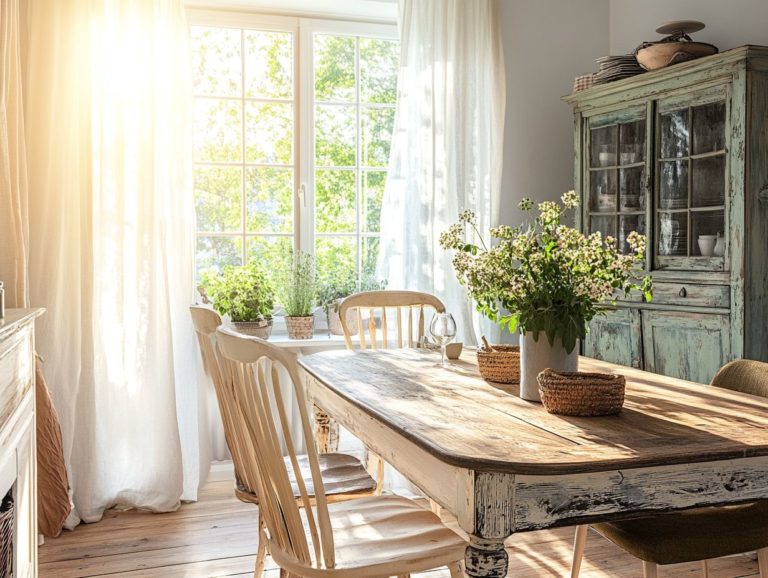
![Top Vintage Furniture Markets in [Your City]](https://antiquepad.com/wp-content/uploads/2024/08/top-vintage-furniture-markets-in-your-city-gT-768x578.jpeg)

